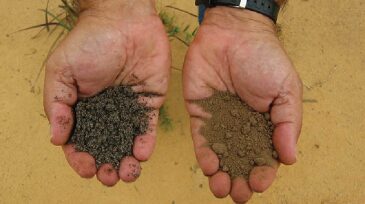R&D/innovation
This article is the fourth in a Q&A series from the SPE Research and Development Technical Section focusing on emerging energy technologies. In this piece, David Reid, the CTO and CMO for NOV, discusses the evolution and current state of automated drilling systems.
Oil and gas experts encourage human/AI partnerships that can “supercharge” capabilities to create competitive advantages.
The US supermajor is using one of its lowest-value hydrocarbon products to generate double-digit production increases in its most prolific US asset.
-
Add a new possible use for downhole casing: It can serve as broadcast antennae.
-
In the northeastern desert of Utah, a new type of oil sands extraction technology has been born. The company behind it claims the process is the most cost-effective and environmentally sound way to develop oil sands.
-
Saudi Aramco’s plan to create a global network of research centers is becoming a reality. It recently celebrated the opening of its Houston center that the company’s President and Chief Executive Officer Khalid Al-Falih described as “an upstream research center like no other.”
-
Last year, lawmakers in the United States sent a blunt message to the oil business: If it wants new exploration and production technology, it will need to pick up more of the cost.
-
Saudi Aramco is on a mission to increase the amount of seismic data that it collects by fourfold, while reducing costs and acquisition time by half of what it spends today.
-
A destructive run of three hurricanes has been a catalyst for a flurry of innovations in decommissioning shallow-water wells in the US Gulf of Mexico.
-
Diamond-tipped cutters are the leading edge for technology development as companies seek an advantage that will allow customers to drill faster and longer before changing bits.
-
The variables defining drill-bit performance cover a lot of ground. There is a lot of attention given to cutters studding diamond drill bits, but just as important are what is in the rest of the drillstring and the decisions made by the driller.
-
For decades, the industry has worked to realize the potential of gathering seismic data in wells. But it is a hostile environment for standard equipment. An inventor has developed a fiber optic system that can handle the heat, but he needs backers to see if it can deliver in the ground.
-
The lifespan of a huge, old oil field in Oklahoma is now linked to a fertilizer plant 68 miles away. Chaparral Energy is capturing 45 million ft3/D of carbon dioxide (CO2) that had previously been vented into the atmosphere in Coffeyville, Kansas, compressing it, and sending it via a pipeline.













